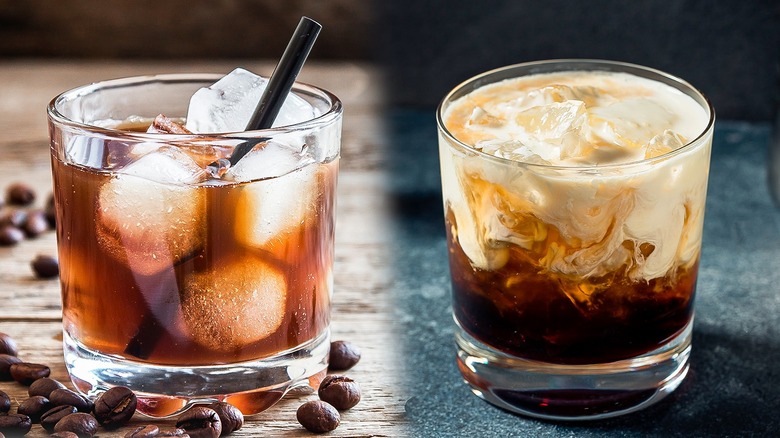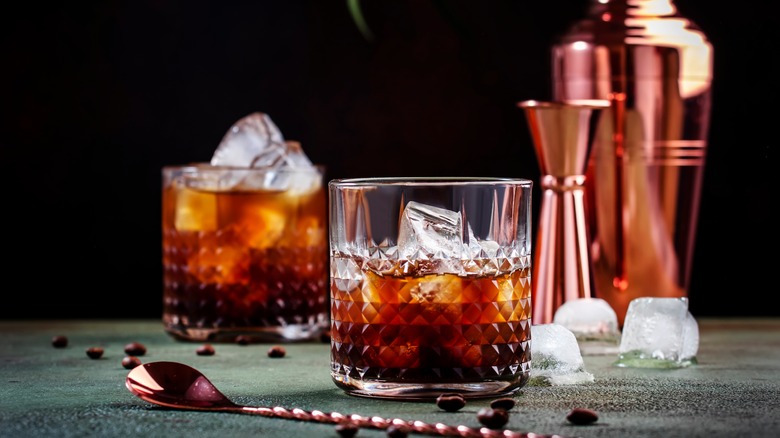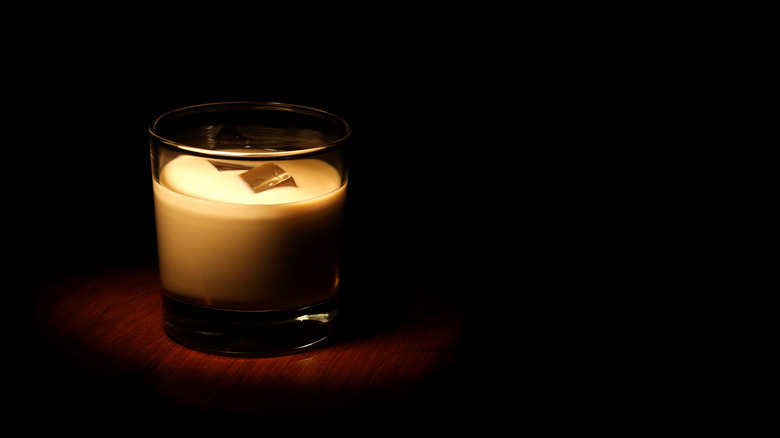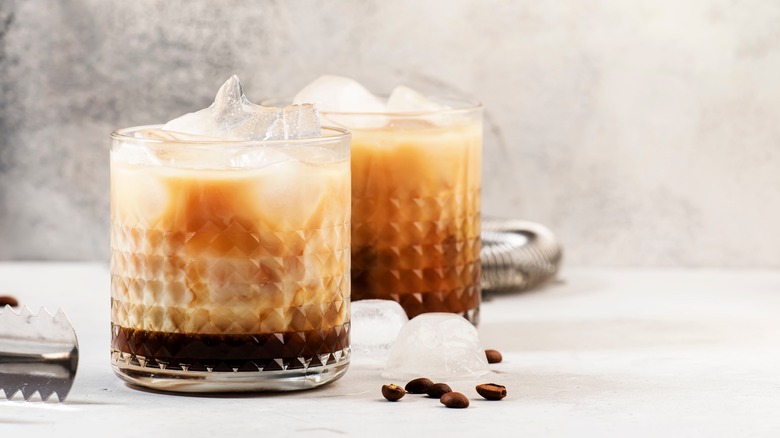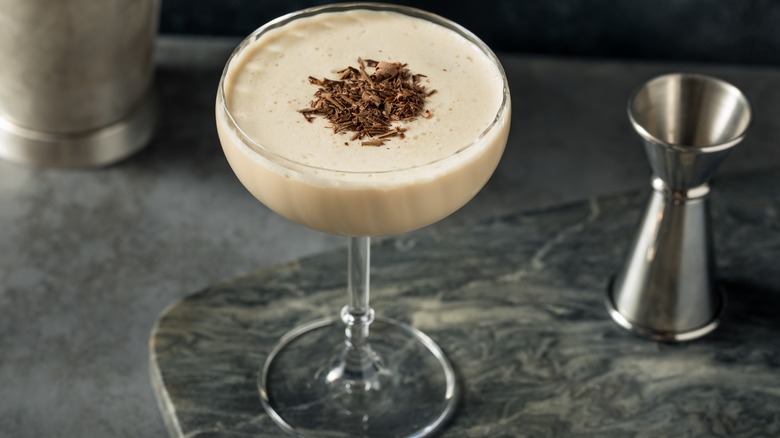Black Vs White Russian Cocktails: What's The Difference?
Too often, crafting a cocktail can feel intimidating. Whether it's fine-tuning ingredients in a perfect martini or the arduous shaking technique of a Ramos gin fizz, many drinks require some know-how. However, there are also examples of casual, easy-to-make cocktails for novice mixologists and seasoned drinkers alike. Take the black Russian and its more famed spin-off, the white Russian. All that is required is a tasty coffee liqueur, some vodka, and the optional cream, and a delicious drink emerges. The ratios are forgiving, and the cocktail only requires a stir to combine; there is no need for a shaker.
The intricacy can lie in nomenclature rather than technique. The difference between a black and white Russian is solely the addition of cream. The ingredient impacts the drink both texturally and flavorwise, lending smoothness and a rich density. With a simple shift from two ingredients to three, a modern classic emerges.
What is a black Russian?
The black Russian is a straightforward yet delicious two-ingredient cocktail. The drink mixes together vodka and a coffee liqueur to craft a boozy, slightly sweet, and endlessly drinkable result. While variable ingredients can be utilized, the drink is especially intertwined with Kahlúa. This brand is sweeter than other liqueurs, playing to the cocktail's dessert-like nature. Other renditions amplify the drink's spirituous or coffee notes.
Regardless of the employed spirits, the black Russian offers a strong drink. Most recipes employ 2 ounces of vodka mixed with around an ounce of coffee liqueur. Such a boozy pairing pushes the cocktail to around 30% ABV while remaining pleasantly sippable.
The black Russian is typically accredited to bartender Gustave Tops. It's said he crafted the drink in the 1940s at the Hotel Metropole in Brussels for a visiting American ambassador. In jest to the ongoing Cold War, the bartender gave the drink with the black Russian moniker.
What is a white Russian?
The white Russian is a modern-day classic, building off the black Russian formula with the addition of cream. Typically, this dairy product is incorporated in an equal ratio with the coffee liqueur. It's poured on top of the mixed alcohols for a flourish, creating an aesthetic cloudy suspension. Prior to serving, the drink is stirred together, creating a smooth, rich, and sweet cocktail.
The origins of the white Russian are murky, but it's clear the drink came about later than the black Russian. Its first mention occurred in an American newspaper in 1965, and the cocktail only grew in popularity from there. Its buzz fell off in the 1980s, but the drink's frequent enjoyment in "The Big Lebowski" once again put the drink into the limelight. Easily crafted with accessible components, it's remained a favorite made at casual bars and in homes. With only three ingredients, it's a showcase of simple mixology at its best.
The white Russian includes cream for added drinkability
The white Russian's touch of cream is a straightforward addition, but it transforms the cocktail into a distinct creation. Its palate is mellowed out, with the cream adding a pleasant dairy flavor as well as lending a rich mouthfeel. The white Russian can also be made with lower-fat dairy products like half and half for lighter sipping, but cream is still the most traditional. The component melds perfectly with the other drink elements — especially the coffee liqueur — crafting a drink reminiscent of a stiff milkshake.
The inclusion of cream also reduces the cocktail's alcoholic concentration. While it still offers the same potency, the added dilution makes the drink's booziness less upfront. Amplified by its cultural revitalization, it's no surprise that the white Russian is the more popular of the two drinks. In accordance with its portrayal in "The Big Lebowski," the pour of cream is forgiving. As a result, it's a riff that comes together easily yet tastes delicious.
Both drinks are open to numerous riffs
The black Russian's trusty combo of vodka and coffee liqueur opens up to numerous deviations. A shot of Irish cream makes it a Mudslide, lending it a more dessert-like character, and the drink is often expanded into milkshake-like creations. The combination of components like ice cream, Nutella, and other sweets makes for a delicious frozen Mudslide delight.
Alternatively, the addition of cola to a white Russian makes it a Colorado bulldog, which is taller and more drinkable. Bartenders also experiment by changing the cream component, making it vegan with coconut milk or extra funky with goat dairy. There are also many booze-base variations. Vodka can be swapped with rum, or other liqueurs are added for more complexity. The drink's flavor pairing can even be brought into espresso martini territory, crafted by shaking up liqueur, vodka, and espresso. From such a straightforward pairing of vodka and coffee liqueur, there are a plethora of delicious reinterpretations.
